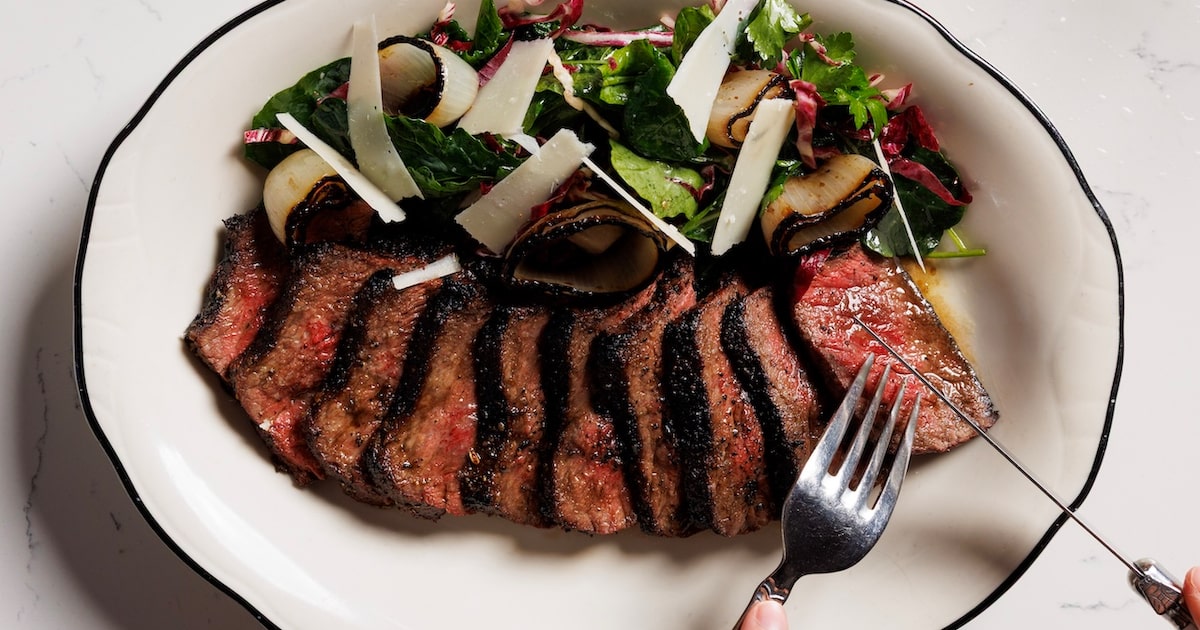There’s no question that Dallas restaurants run the gamut of unique cuisines — and the world is taking note (hello, Michelin). But steakhouses still hold plenty of sway here, feeding locals and visitors a seemingly endless supply of red meat. Fortunately, they’ve become more interesting over the years, with many of them embracing more modern sensibilities, from the design to the plate.
When ordering steak, it’s easy to default to the classics — a hearty rib eye, a tender filet mignon — but increasingly cuts that don’t typically get top billing are appearing on menus. Steaks like spinalis, hanger, bavette and tri-tip are now sitting beside New York strips or anchoring menus on their own. These cuts are often chef and butcher favorites, prized for their flavor, texture and versatility. They come from different parts of the cow than the more ubiquitous cuts, often pulled from the shoulder or the top or bottom sirloin. Some are known for intense marbling, while others are lean, muscular cuts that require a marinade or longer cook times. When treated right, they deliver a depth of flavor and character that rivals or even surpasses more popular steaks.
“New York strips are great, and I love rib eyes, but the marbling you can get in some of these butcher cuts is phenomenal,” says Sophia Schoenstedt, chef de cuisine at Gemma, the long-running bistro on Henderson Avenue. The restaurant’s steak frites dish features a rotating Texas wagyu butcher’s cut, usually flat iron, bavette or zabuton, also called a Denver steak. There’s also a skirt steak served with shrimp fried rice and scallion nuoc cham, a sweet and savory Vietnamese condiment made withfish sauce and lime juice. “It’s a bit leaner of a cut,” explains Schoenstedt, “but it packs a lot of that nice, beefy flavor.”
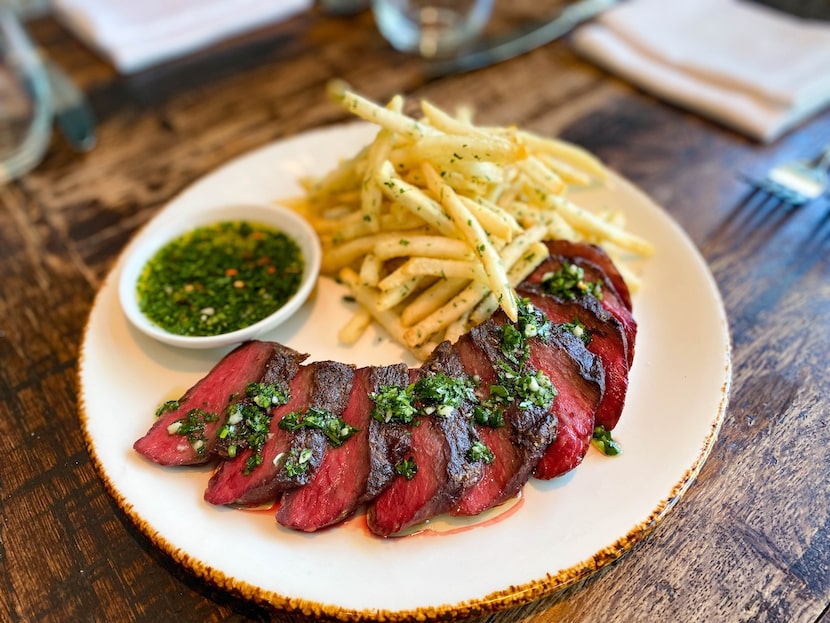
Modern American bistro Gemma rotates Texas wagyu butcher’s cuts — usually flat iron, bavette or zabuton — for its steak frites entree.
Courtesy Gemma
Eat Drink D-FW
Several restaurants are now serving spinalis — the outer muscle of the rib eye, or rib-eye cap — including The Mexican and Evelyn, both in the Design District. Dee Lincoln Prime in Frisco serves spinalis as part of its nightly off-menu “chef ’s cuts” specials.
Santiago Hiriart, executive chef at The Mexican, likes spinalis for its “beautiful marbling,” which he says melts during cooking, making the steak especially juicy, tender and flavorful. “The fat content and the muscle structure give the spinalis a deep, beefy, rich flavor that stands out even among other premium cuts,” he says. Evelyn executive chef Henry Johnson thinks spinalis combines the best of both worlds, giving diners the full flavor and marbling of a rib eye with the tenderness of a tenderloin.
Billy Can Can serves a butcher’s steak frites that highlights different cuts usually sourced from Rosewood Ranch in nearby Ennis. Chef de cuisine Oscar Bonilla likes the teres major, which is cut from the chuck section of the cow near the shoulder, and is tender and lean. “It has lots of flavor, and we produce our own beef tallow, so we’ll use that to cook the steak to bring in some of that fat content from the outside. The smoke point is so high, so we can get a nice crust on it without burning,” says Bonilla. The restaurant occasionally features tri-tip as well. “You have to cook it a little differently, because it’s notorious for being tough,” the chef explains. “We sous vide it for five hours to break down the proteins just enough, then we kiss it on the grill.”
Duro Hospitality serves lesser-known steaks at several of its restaurants. The Charles features picanha, a cut of beef from the top sirloin cap that’s also known as coulotte, and El Carlos Elegante uses outside skirt steak for its carne asada. The latter has a rich, beefy flavor and holds a marinade really well, says Duro’s culinary director Jared Harms, adding that it’s “super dreamy” when dunked into the restaurant’s molcajete salsa.
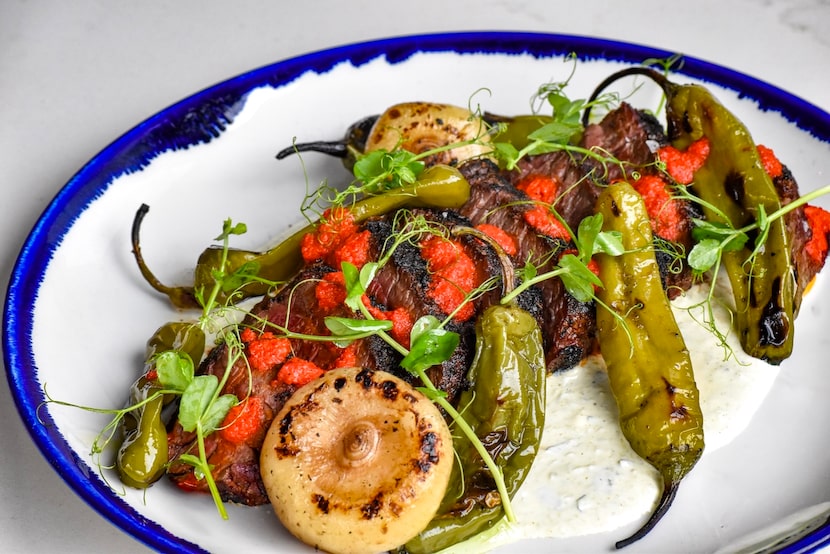
For nice marbling and tender muscle fibers, you can’t beat Akaushi hanger steak at Sister on Greenville Avenue.
Keith Adamek
Greenville Avenue’s Sister offers an Akaushi hanger steak entree that Harms says is a chef ’s favorite, with nice marbling and large, tender muscle fibers that make this cut really shine when cooked on the wood grill.
Stock & Barrel in Bishop Arts serves a hanger steak with hand- cut fries and preserved green garlic butter. Old-school steakhouse Y.O. Ranch has coulotte steak frites on its menu. And The Saint, an Italian-inspired steakhouse, serves wagyu bavette au poivre and wagyu coulotte.
But it’s not just traditional steakhouses and high-end restaurants that are thinking outside the strips and the rib eyes. Casual steak frites joint Medium Rare serves a $32 prix fixe menu centered around coulotte, and Steakyard has a $32 coulotte that comes with fries and brandy peppercorn sauce.
We’ll never besmirch a good rib eye or a perfectly seared New York strip — but with these once-ignored steaks now earning prime placement on Dallas menus, the next time you’re out to dinner, take a chance on one of these unsung cuts.
5 butcher-approved cuts to cook at home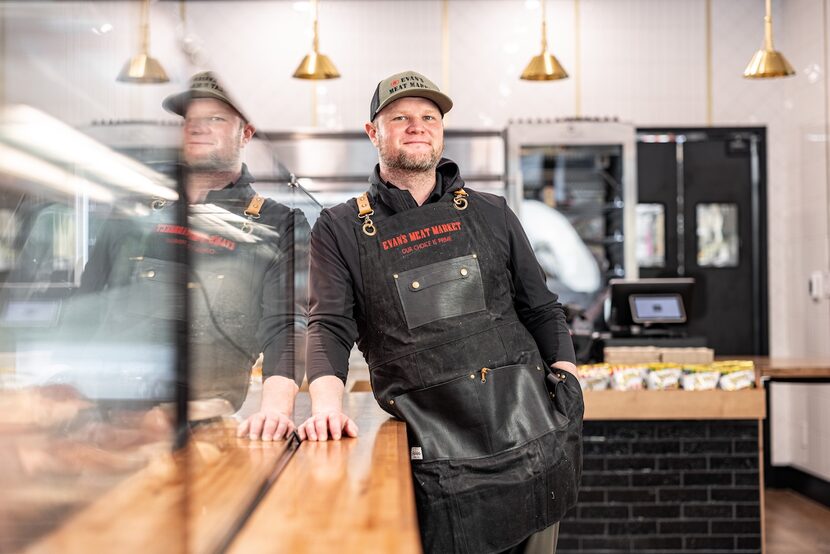
Evan Meagher shares some of his favorite unexpected cuts of meat — and how to cook them at home.
Kathy Tran
The next time you’re perusing the meat counter, ask the butcher for their recommendation — they’re likely to suggest something beyond the usual suspects. Below, Evan Meagher of Evan’s Meat Market in The Shops at Highland Park shares five of his favorite unexpected and extra-flavorful cuts, and how to cook them at home
1. Beef cheeks
Among the most overlooked cuts, beef cheeks have found a new life in modern kitchens, says Meagher. The hardworking muscles are tough when raw, so he suggests slow-braising the meat to break down that connective tissue until it’s silky and spoon tender. “A little patience goes a long way for an unforgettable meal.”
2. Tri-tip
“Popular on the West Coast but still underused elsewhere, this is one of my favorite sleeper cuts,” says Meagher. The lean, flavorful tri-tip steak is cut from the bottom sirloin. Sear it first, then cook over indirect heat to a rosy medium-rare.
3. Hanger steak
Tucked near the diaphragm, hanger steak is full of rich, mineral flavor, with a texture that strikes a perfect balance between tender and hearty. “It won’t outshine a filet for finesse, but when you want a deeply satisfying steak night, hanger’s hard to beat.” Cook it to medium-rare or medium for the best texture.
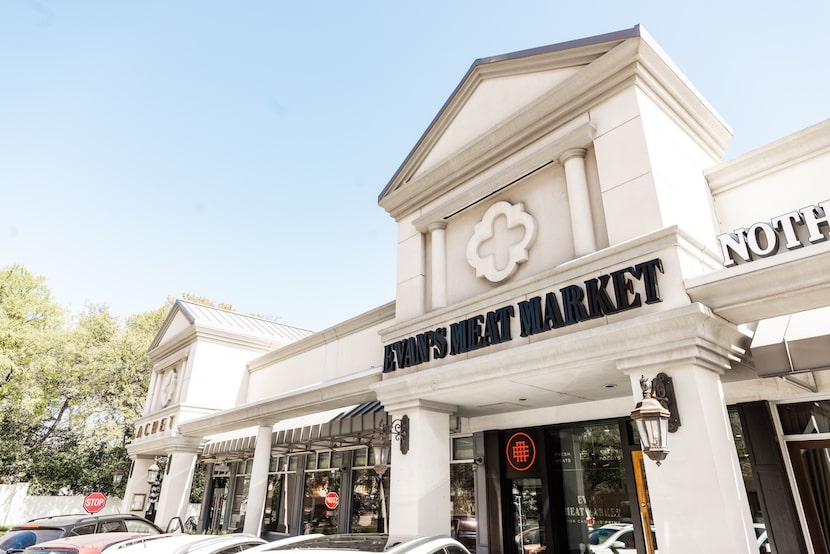
Evan’s Meat Market on Oak Lawn Avenue is a neighborhood butcher shop.
Kathy Tran
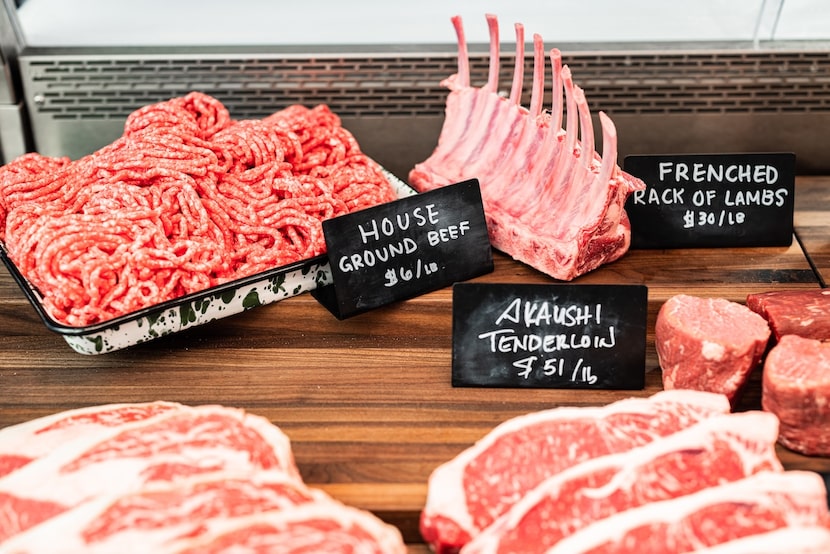
You can find a variety of unique cuts of meat at Evan’s.
Kathy Tran
4. Chuck roll
Meagher often chooses chuck roll at home, enlisting it for pot roast or stew, or smoking it like brisket. “Taken from the shoulder, it’s versatile, richly marbled and everyday beef at its best,” he says, adding that it makes incredible ground beef.
5. Bavette steaks
Bavette comes from the bottom sirloin near the flank, so think of it as a cousin to skirt steak or flank steak, says Meagher, who describes the cut as “loose-grained, tender and packed with flavor. The meat takes well to marinades, loves a hot sear and slices beautifully for family-style meals.”
